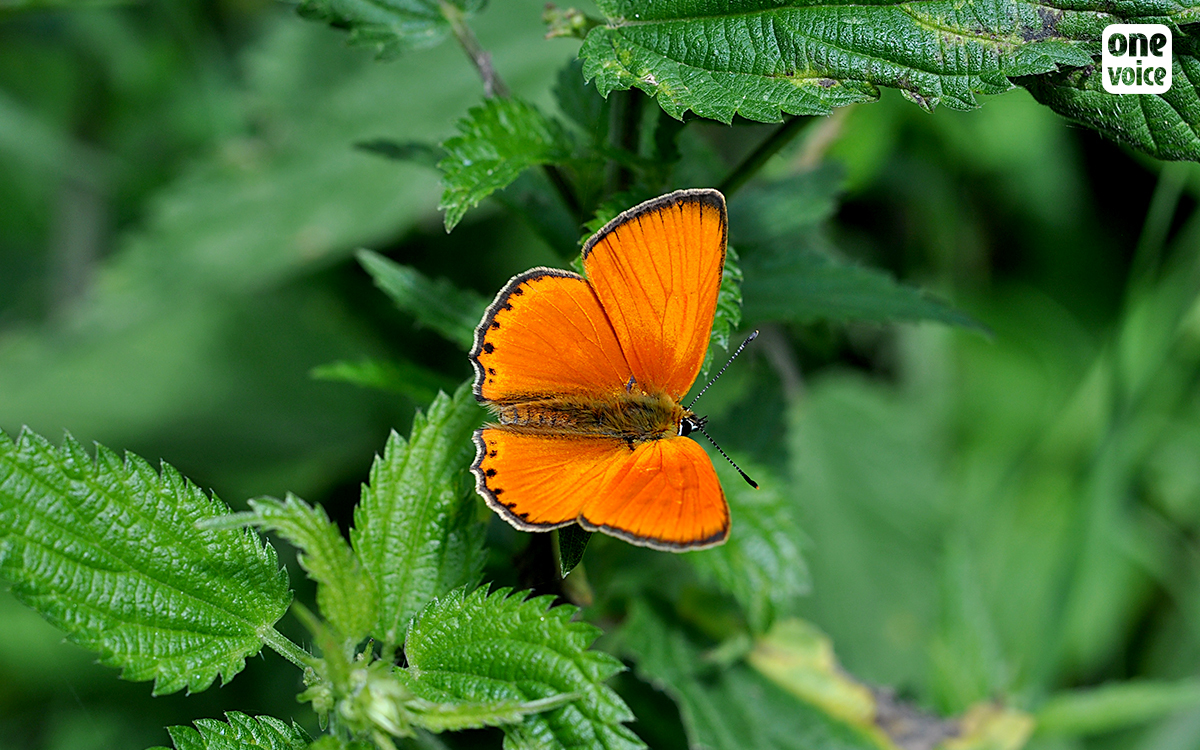
Nettles, the friend of butterflies
One Voice leads a nonviolent fight to defend animal rights and respect all life forms. The organization operates independently and is thus free to speak and act freely.
This plant covered with stinging hairs does not look like much and attacks those who underestimate her. Able to defend herself against brutes, she protects her virtues as much as her allies. You have to have the grace of a butterfly to know how to approach her, talk to her and take refuge in her.
She
bites and she burns. However, one rarely declares her flames as a
bouquet of flowers when she is in blossom, presenting herself mainly
in the form of multi-coloured rows of clustering small pale flowers.
A nettle (Urtica), whatever her species, she has no allies. Of the
nettle family of Urticaceae, her hairy prickly leaves, are
uninviting. We avoid her at the side of the roads, we curse her when
we accidentally rub against her and the well-mowed lawn enthusiasts
pull her out or kill her with pesticides. We don’t know her well
enough.
Safe Haven
Because
this very old herb has many properties. She has been used since time
immemorial, both in food and medicine, in particular. A natural
fertilizer, her liquid manure is also very beneficial to the rest of
the vegetation. But the benefits of nettles are not limited to the
exploitation of them by humans. Her mere presence on the banks of
streams, at the edge of the fields, at the bottom of a vacant plot,
represents a boon for the surrounding flora and fauna. While cleaning
up polluted soils, she attracts a host of admirers, and in particular
butterflies! Many have understood how this uninviting plant is an
ideal refuge for sheltering from predators. And her mass turns out to
be a small garden of Eden where the cunning lepidopterans come to fly
with grace.
Nursery
In
a group of colourful foragers, we can in particular admire the
Vulcan, the Small Tortoiseshell, the Peacock Butterfly, the Comma,
the Map or even the Beautiful Lady. Sometimes less flamboyant, the
Owlet moths are not left out either: the Jersey Tiger, the Nettle
moth, the Small Magpie, the Silver Y and the dark spectacle, are just
a few of the many who regularly visit this “weed”. Many
also put their offspring in her care. Depending on the species, each
butterfly has its own technique. The Vulcan, for example, deposits
its eggs one by one on the top of the leaves (the caterpillars later
roll up the leaf to feed on from the inside out), while the Map
prefers to lay its eggs underneath the leaves, in the form of
cascading rosaries … which look like the inflorescences of the
plant itself!
Winged poets in danger
Thus, nettles provide both
food and shelter for a host of butterflies, whatever their stage of
metamorphosis. When you know that these endangered insects are
threatened with extinction, mainly due to the degradation of their natural environments, preserving their habitat is more essential than
ever! Leaving a square area of nettles at the bottom of your garden
is more than an easy gesture, it is an act of resistance against the
decline of biodiversity! To fight alongside us and sanctify more and
more green spaces, join the Arches of Nature!